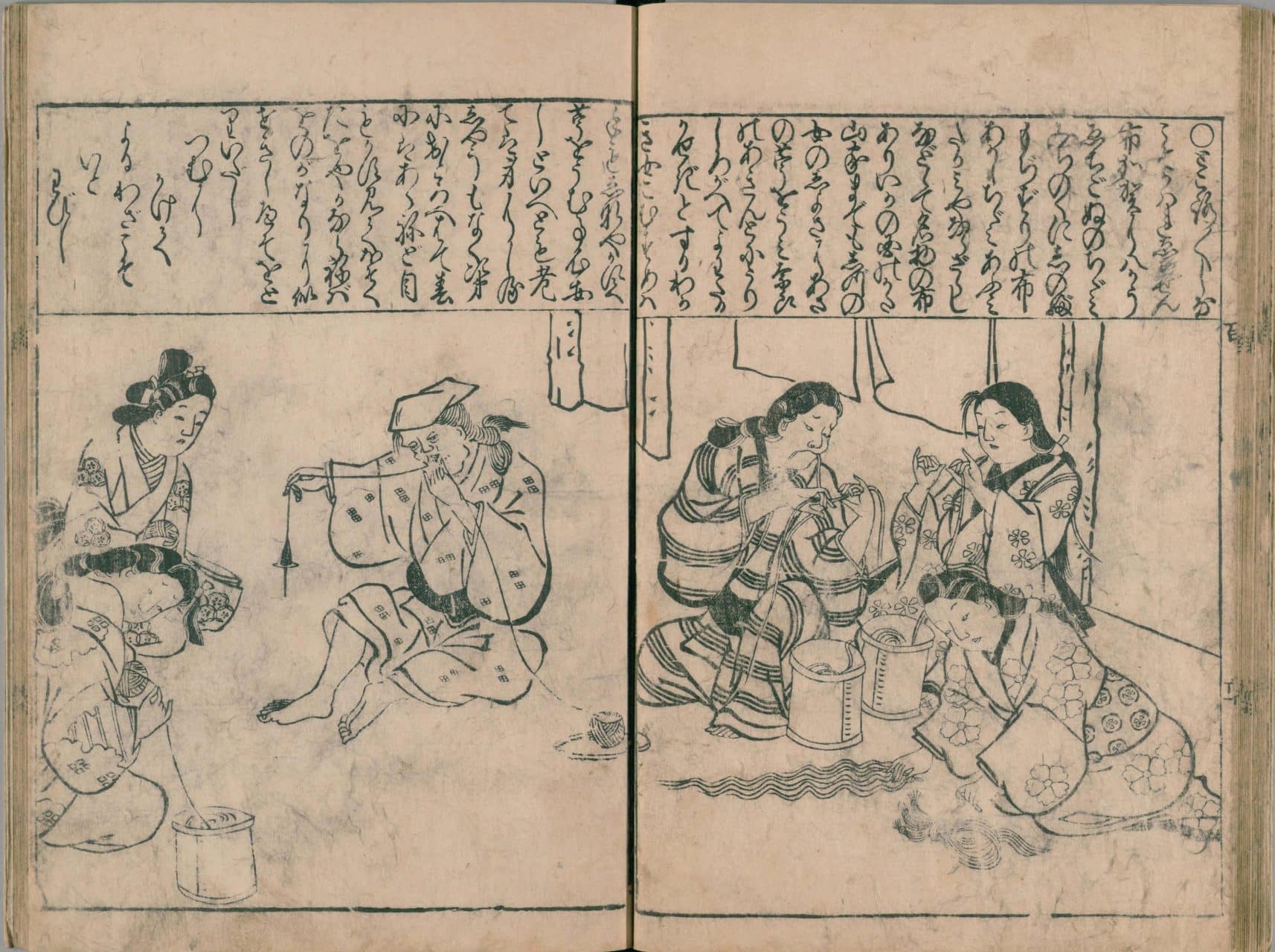
Hishikawa Moronobu, 1695
Weaver
Hemp cultivation in Japan began 6-7000 years ago, during the Jomon period, which is also when Shinto began to emerge. People of the Jomon culture wove textiles from plant fibres.


Hishikawa Moronobu, 1695
Hemp cultivation in Japan began 6-7000 years ago, during the Jomon period, which is also when Shinto began to emerge. People of the Jomon culture wove textiles from plant fibres.
Clothing was made from hemp, ramie (a plant from the nettle family), or mulberry. Later, silk and cotton also became popular. Only after the mid-eighteenth century, when Japan became increasingly open, did ordinary people started growing and processing cotton on a larger scale.
Japanese artisans all over the countryside spun hemp fibres into threads, then hand-wove them into textiles. Hemp was the main source of everyday peasant clothing and was used in many household items.
In 1696, the book Wakoku hyakujo (One Hundred Women of Japan) was published, in which Japanese graphic artist Hishikawa Moronobu immortalised customs and habits of Japanese women. The image here shows a weaver working at a loom. Amaterasu, the foremost kami, was, according to tradition, the inventor of the loom. She taught people to weave hemp textiles and silk.
In a famous Japanese story, Amaterasu’s brutal brother Susanoo was very jealous of his popular sister. He did a series of terrible things to her, culminating in throwing a bloody horse carcass into her weaving room. Susanoo destroyed the loom and ruined the precious fabrics. In the chaos, a shuttle from a loom injured one of the weavers, and she died. Saddened and angry, Amaterasu locked herself in a cave, causing darkness to fall over the entire universe.
Sign up to get the latest news about the museum, upcoming exhibitions and events.
Oudezijds Achterburgwal 148
+31 (0)20-6248926
amsterdam@hashmuseum.com
Monday to Friday: 12:00 – 20:00
Saturday to Sunday: 10:00 – 22:00
More information
Carrer Ample 35
+34 93 319 75 39
barcelona@hashmuseum.com
Every day: 11:00 – 20:00
More information
© 1987 - 2025 Hash Marihuana & Hemp Museum. All Rights Reserved. CSS Status 404